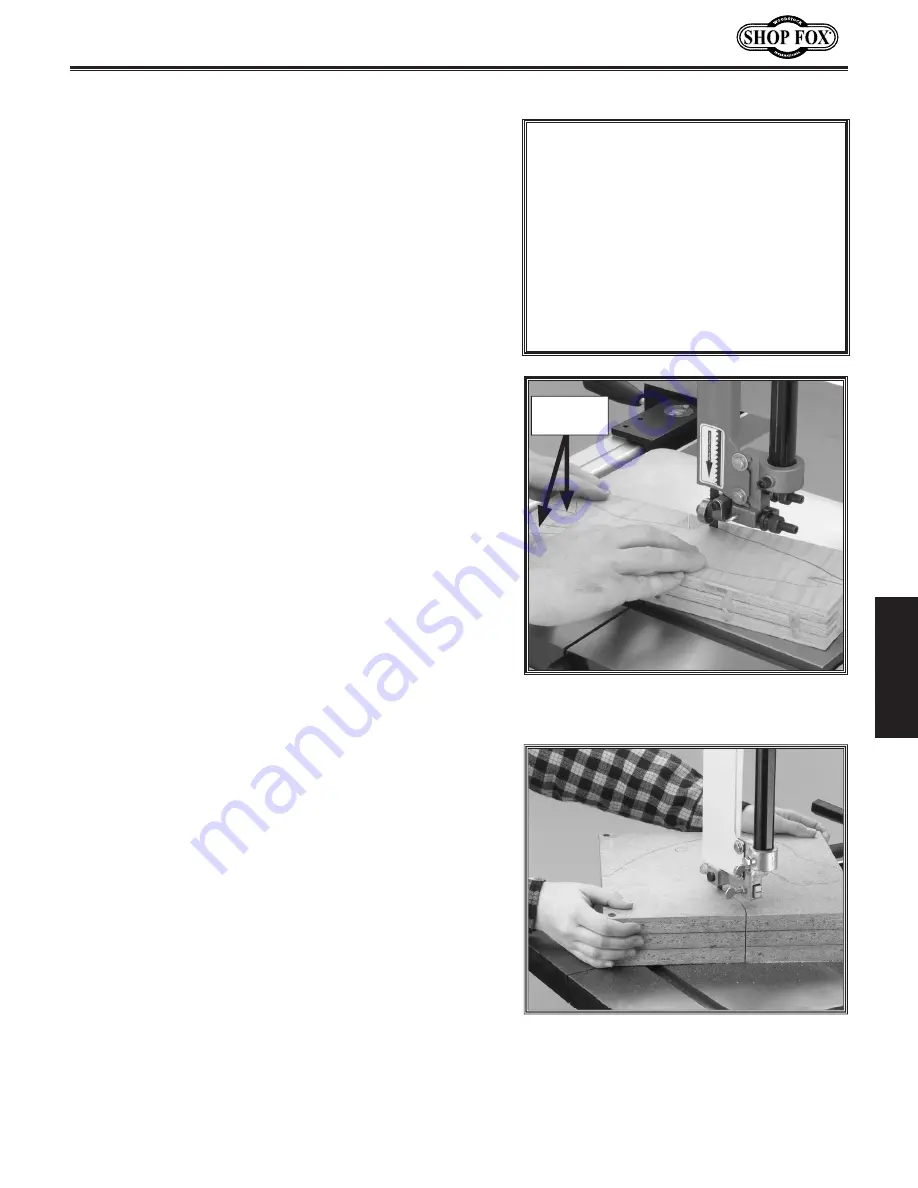
-31-
W1749 9" Bandsaw
O
PE
R
AT
IO
N
S
When cutting curves, simultaneously feed and turn the
stock carefully so that the blade follows the layout line
without twisting. If a curve is so abrupt that it is neces-
sary to repeatedly back up and cut a new kerf, use either
a narrower blade or a blade with more TPI (teeth per
inch), or make more relief cuts (See
Figure 46
).
Always make short cuts first, then proceed to the lon-
ger cuts. Relief cuts will also reduce the chance that
the blade will be pinched or twisted. Relief cuts are
cuts made through the waste portion of the workpiece
and are stopped at the layout line. As you cut along the
layout line, waste wood is released from the workpiece,
alleviating any pressure on the back of the blade. Relief
cuts also make backing the workpiece out easier, if need-
ed.
Cutting Curves
NOTICE
The list below displays blade widths and
the corresponding minimum radii for
those blade widths.
Width
Radius
1
⁄
8
" ...........................
1
⁄
8
"
3
⁄
16
" ..........................
3
⁄
8
"
1
⁄
4
'' ...........................
5
⁄
8
''
3
⁄
8
'' ...........................1
1
⁄
4
''
Figure 46.
Typical relief cuts before
cutting curves on a bandsaw.
Relief
Cuts
One of the benefits of a bandsaw is its ability to cut mul-
tiple copies of a particular shape by stacking a number of
workpieces together. Before making stacked cuts, ensure
that both the table and the blade are properly adjusted
to 90°. Otherwise, any error will be compounded.
To complete a stacked cut, do these steps:
1.
Align your pieces from top to bottom to ensure that
each piece has adequate scrap to provide a clean,
unhampered cut.
2.
Secure all the pieces together in a manner that will
not interfere with the cutting. Hot glue on the edges
works well, as do brad nails through the waste por-
tion. (Be careful not to cut into the brads or you
may break the blade!)
3.
On the face of the top piece, lay out the shape you
intend to cut.
4.
Make relief cuts perpendicular to the outline of your
intended shape in areas where changes in blade
direction could strain the woodgrain or cause the
blade kerf to bind.
5.
Cut the stack of pieces as though you were cut-
ting a single piece. Follow your layout line with the
blade kerf on the waste side of your line as shown in
Figure 47
.
Stacked Cuts
Figure 47.
A typical stacked cut on a
bandsaw.
















































